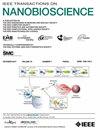DNA-CBIR: DNA Translation Inspired Codon Pattern-Based Deep Image Feature Extraction for Content-Based Image Retrieval
IF 4.4
4区 生物学
Q1 BIOCHEMICAL RESEARCH METHODS
引用次数: 0
Abstract
DNA is emerging as a promising medium for storing huge volumes of data in a confined space that remains intact for thousands of years. Although this technique is very efficient, especially for multimedia data like images, there is a lack of efficient searching and retrieval technique. This paper addresses this issue and proposes a novel Content Based Image Retrieval (CBIR) technique to retrieve similar images from the generated DNA-based image feature vectors. The features are obtained by a novel encoding scheme that uses the three Most-Significant Bits from the images and converts them into a string of nucleotides that follow run length and GC constraints to form DNA planes stored in a DNA medium. The nucleotides in these planes are interpreted through three consecutive sequences forming codons. The codon-based features are then utilized to perform instance-based image retrieval. The DNA planes are further adapted and implemented on diverse deep learning architectures, including ResNet-50, VGG-16, VGG-19, and Inception V3, to facilitate classification-based image retrieval tasks. The system’s performance has been assessed using a range of datasets, encompassing coral, medical, and multi-label images. Experimental results demonstrate that the proposed approach achieves notable improvements when compared to existing state-of-the-art methods.DNA- cbir:基于DNA翻译启发密码子模式的深度图像特征提取,用于基于内容的图像检索。
DNA正在成为一种很有前途的媒介,它可以在一个有限的空间里存储大量的数据,这些数据可以保存数千年。虽然该技术非常高效,特别是对于像图像这样的多媒体数据,但缺乏高效的搜索和检索技术。针对这一问题,本文提出了一种新的基于内容的图像检索(CBIR)技术,从生成的基于dna的图像特征向量中检索相似的图像。这些特征是通过一种新的编码方案获得的,该方案使用图像中的三个最有效位,并将它们转换成一串核苷酸,这些核苷酸遵循运行长度和GC约束,形成存储在DNA介质中的DNA平面。这些平面上的核苷酸通过三个连续的序列来解释,形成密码子。然后利用基于密码子的特征执行基于实例的图像检索。DNA平面在不同的深度学习架构上进一步调整和实现,包括ResNet-50、VGG-16、VGG-19和Inception V3,以促进基于分类的图像检索任务。该系统的性能已经使用一系列数据集进行了评估,包括珊瑚、医疗和多标签图像。实验结果表明,与现有的最先进的方法相比,该方法取得了显着的改进。
本文章由计算机程序翻译,如有差异,请以英文原文为准。
求助全文
约1分钟内获得全文
求助全文
来源期刊

IEEE Transactions on NanoBioscience
工程技术-纳米科技
CiteScore
7.00
自引率
5.10%
发文量
197
审稿时长
>12 weeks
期刊介绍:
The IEEE Transactions on NanoBioscience reports on original, innovative and interdisciplinary work on all aspects of molecular systems, cellular systems, and tissues (including molecular electronics). Topics covered in the journal focus on a broad spectrum of aspects, both on foundations and on applications. Specifically, methods and techniques, experimental aspects, design and implementation, instrumentation and laboratory equipment, clinical aspects, hardware and software data acquisition and analysis and computer based modelling are covered (based on traditional or high performance computing - parallel computers or computer networks).
 求助内容:
求助内容: 应助结果提醒方式:
应助结果提醒方式:


